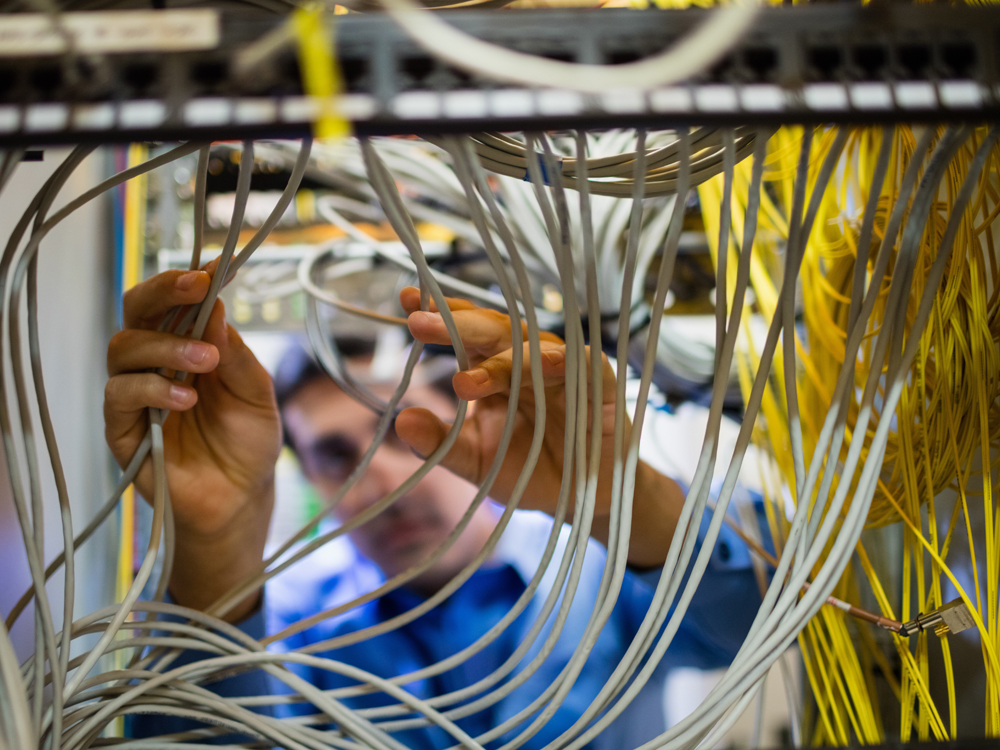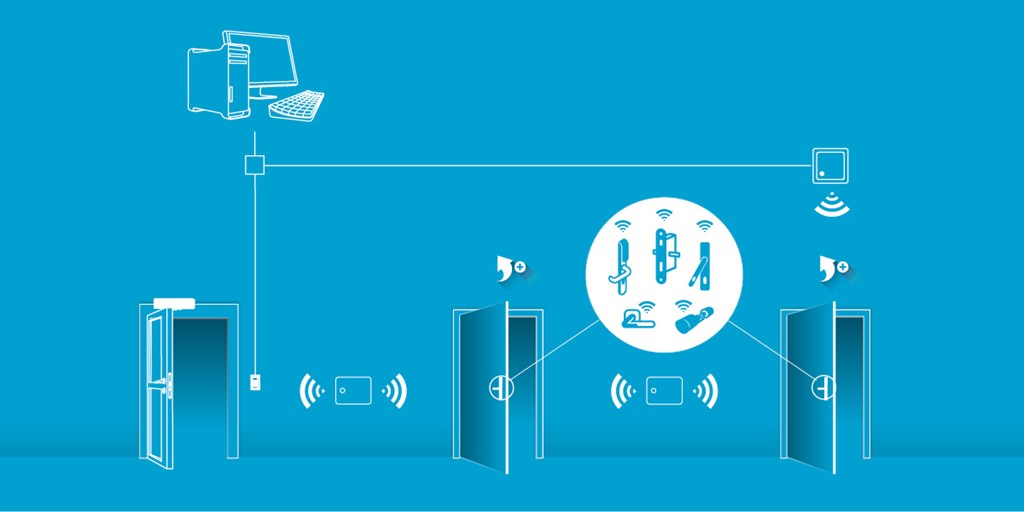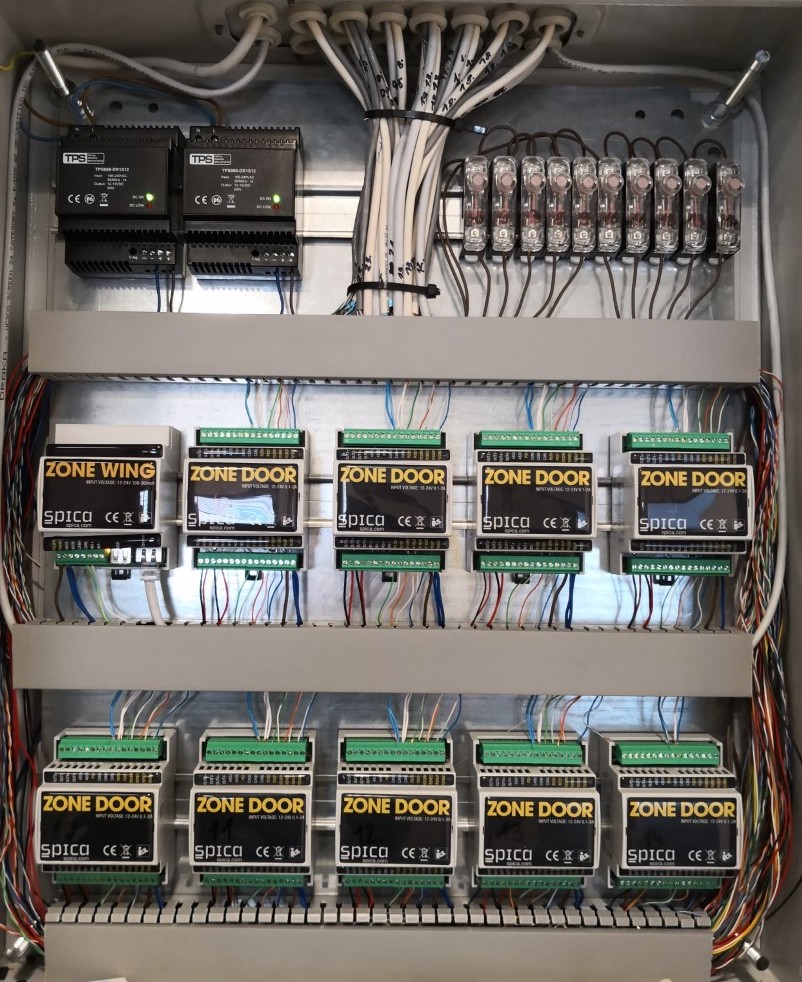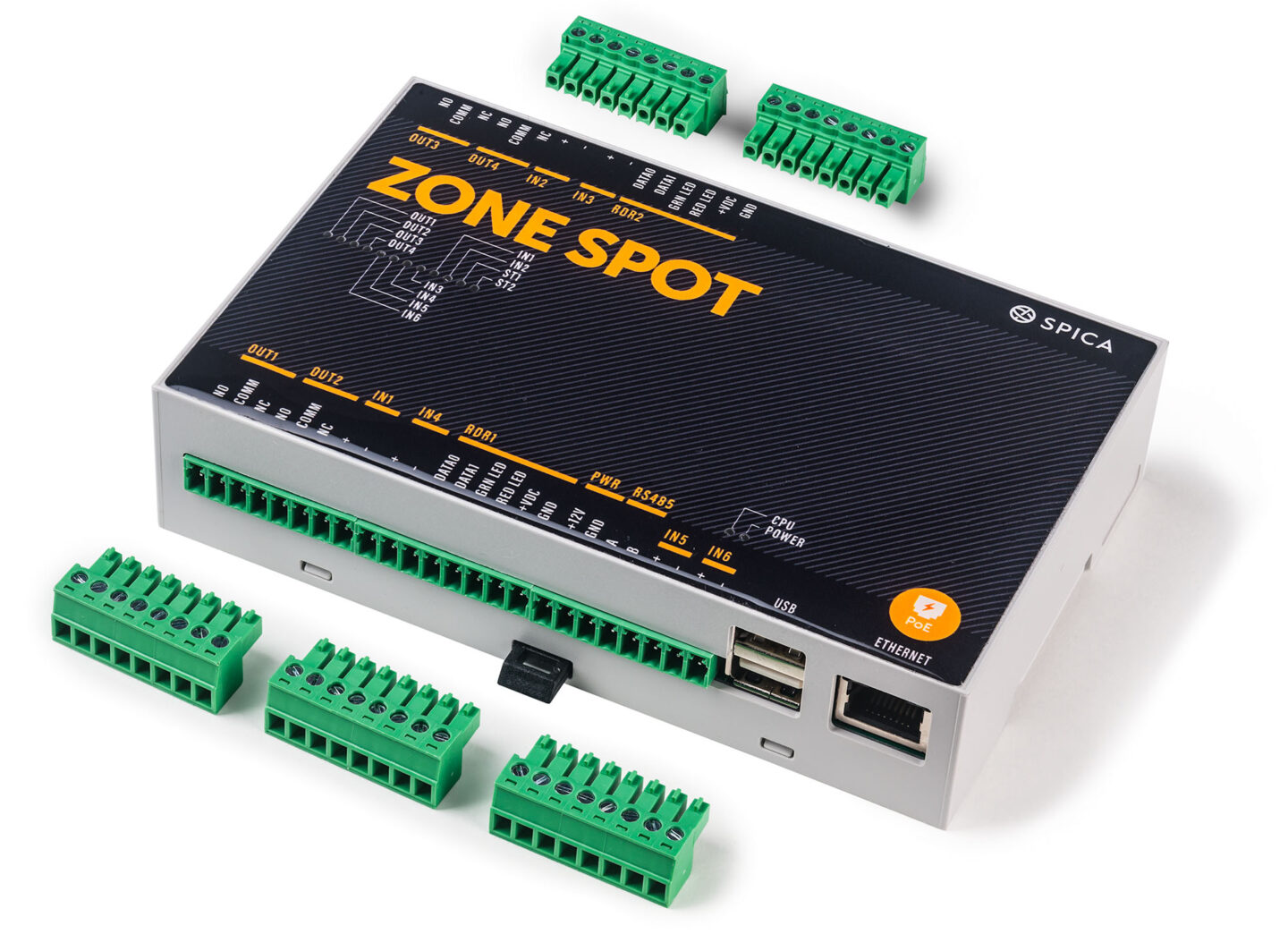Four Cabling Strategies for Access Control
When we talk about wiring strategy in access control, we are really talking about controller networking. But before we get to that, what about wireless locks? Some may think that we do not even need to talk about cabling, so let us start right there.

Some home systems can indeed be wireless. For example, with smart locks that are battery powered and connect via WiFi, there is no wiring at all. At least for single-door systems, zero cabling is a real possibility. However, the solution for a single door or even a few doors is very different from systems with dozens or hundreds of doors.
Once we move away from consumer territory, we need to do at least some cabling. For any type of wireless system with multiple doors, we need to provide at least a network connection and a power supply for the wireless hub. With PoE it can be only one cable, but there it is, some cabling is required. Especially in larger systems, when there are multiple hubs and each of them needs its own cable.
But not every door is ideal for a wireless lock, quite the opposite. Wired locks are much more universal, cheaper, more reliable, and free of battery issues. And once we go wired, we have three different options to choose from: Centralized, distributed, and so-called “edge” installation.

Centralized
Centralized is still the most commonly practiced installation strategy and is somehow considered standard among installers. There are several reasons for this, the main one probably being the convenience of having everything in the same place. This is often together or near other building installations – electricity, intruder, HVAC, fire, video surveillance. Having everything in one place, even in the same rack or enclosure, is clearly an advantage for maintenance, troubleshooting, repairs etc. For the installer, a centralized installation can also be easier to patch initially and manage later.
This brings us directly to the biggest disadvantage of centralized installation – the sheer amount of cables that converge in one place. In centralized installations, every lock or strike, every reader and sensor is wired directly to the central enclosure. That can mean a lot of cables, at least two per door and often more. Clearly, running and routing such a number of cables is a challenge in itself, not to mention the cost.
This suboptimal cabling situation can be avoided with a distributed or edge installation.
Distributed
With constant advances and falling costs of networking, distributed system architecture became increasingly feasible. The idea is not new and is relatively simple: to take the door IO from controllers into a separate device for each door, put them on a network, and push them as close to doors as possible. This way, all the door IO cabling is local to the door. The cables for locks, readers and sensors can be only a few feet long. The only cable that goes to the central enclosure is the network cable that connects the IO devices to the controller. And thanks to industrial multi-drop networking, multiple IO devices can be daisy chained with a single cable.

All of this will radically reduce the amount and complexity of cabling. Besides the obvious, there are some less obvious benefits, such as the significantly increased door range, from tens to hundreds of meters – an order of magnitude.
Another fact that should not be overlooked: The distributed controller architecture can also be deployed centrally, simply by placing all IO devices in the same place. So that there is no downside if there is demand for a centralized installation.
Edge
Recent advances in processing power and falling prices have led to a new wave of so-called “edge” controllers. These devices are compact and can be easily installed near the door, without the need for a protective enclosure. They have enough processing power to support full-stack internet networking, and full access control feature set. They also have enough memory for long offline operation while serving a large number of users. Without separate hubs or concentrators and with integrated IO, the edge controllers are completely autonomous.

All of this makes edge controllers ideal for dispersed systems, increasingly scattered beyond the reach of distributed architecture. Cabling is a simple matter of bringing powered Ethernet near each door. The installation is simple, nearing DIY.
Last but not least, the advanced security and remote management are perfectly suitable for cloud-based systems, making edge controllers the way of the future.
Time&Space Cabling Summary
Thanks to its minimalist yet powerful controller portfolio, Time&Space supports all installation strategies, from centralised to distributed and edge. Wired or wireless, Time&Space controllers will fit perfectly into any cabling scenario.
More on Zone Access, native Time&Space controllers >>
December 19, 2021
